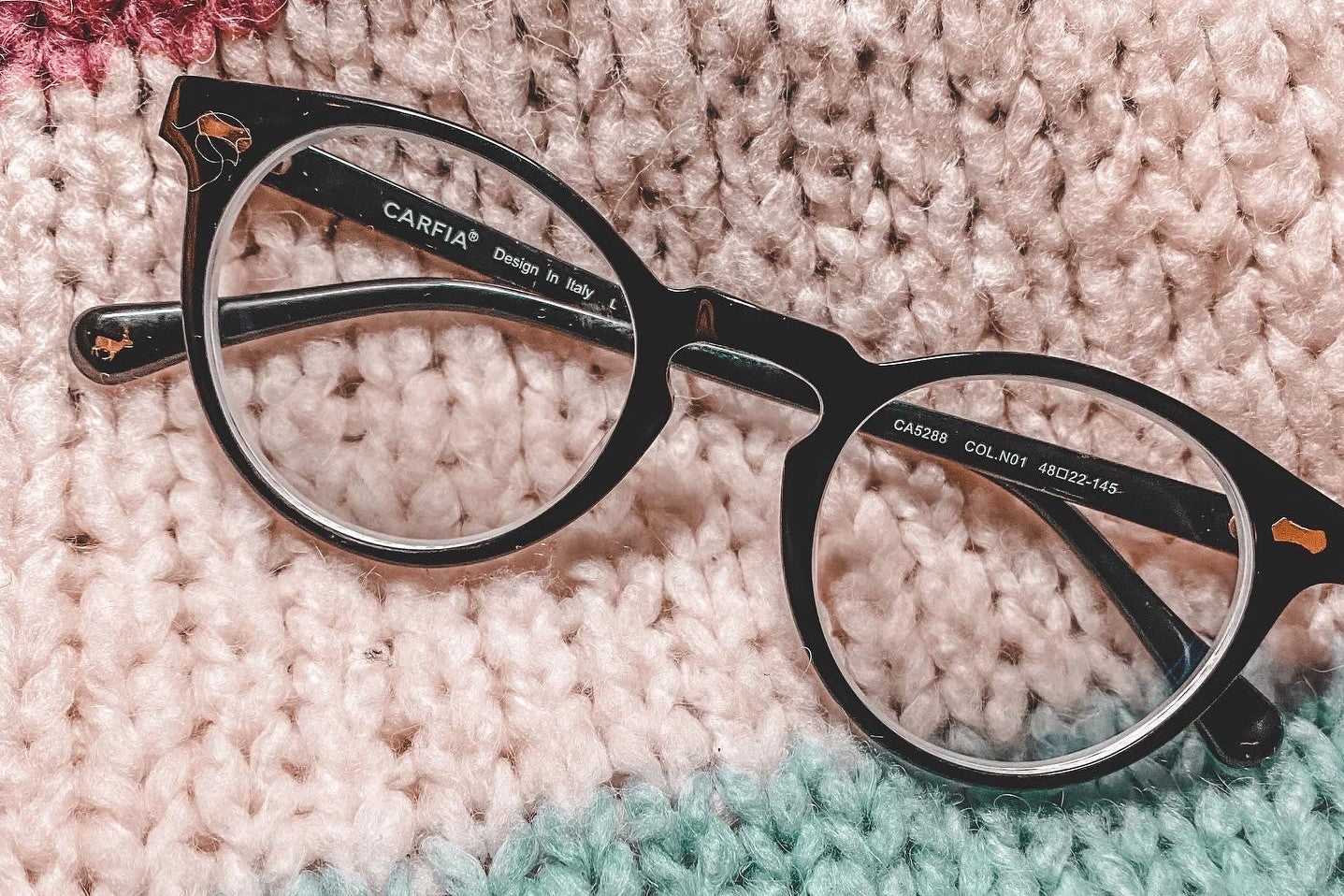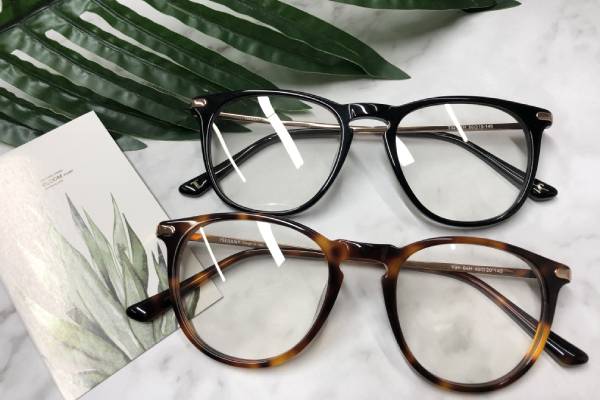What Is Plastic Lens?
In the above part, we have introduced what polycarbonate lenses are. In this section, we will show you what the plastic lens is.
The plastic lens was first introduced in 1947. Since then, plastic has become a popular and widely used material for making eyeglasses lenses. Since the introduction and use of plastic lenses, it has sealed its mark as the most preferred choice in the optical industry.
Plastic lenses are light. With this feature, plastic lenses are popular because they will not be heavy inside the glasses frame and permit for an easy fit in any type of glasses frame. In addition, plastic glasses are cheap and easy to obtain in desired amounts. So, they are affordable for most people. Plastic lenses are very durable. So, they do not shatter easily on impact which makes it a great choice for individuals who are active or tend to drop their glasses often.
However, compared with other lens materials, plastic lenses are usually thick due to their low index of refraction. The soft feature of plastic glasses makes them susceptible to scratching from a sharp object and why scratch-resistant coating is applied to form an additional protective layer. Plastic lenses do not provide ultraviolet protection.
Do prism glasses have side effects?
Prism glasses do not have side effects. Prescription prism glasses are designed to help your vision. Prism glasses are not apparently different from general glasses in terms of thickness. It may take a few days to get used to wearing new prism glasses or newer prescription glasses. There may be some eye strain during this time.
Progressive lenses and single vision lenses
Single vision lenses are the most commonly used prescription lenses. This lens type has a single field of view or a prescription ability of the entire lens and can be used to correct myopia (nearsightedness) or hyperopia (supervision).
Progressive multifocal lenses are lenses with different upper and lower powers for the upper part to see far, and the lower part to see near. The distance from the fixed power above the lens to the fixed power below the lens does not change suddenly, but there is a gradual transition between the two through the gradual change in refractive power.
In recent years, the glasses chain has developed fastly, especially in large and medium-sized cities. The professional glasses stores use their own technical force, progressive optometry equipment, and years of store reputation, which drives the whole industry to improve the quality of products. Nowadays, with the development and expansion of the eyewear industry, eyewear chain stores have become the main force of eyewear product sales in China and even the world. Moreover, tens of thousands of people are directly or indirectly engaged in the operation or management of eyewear chains or related to them. The eyewear industry provides us with a large market and benefits.
Are titanium glasses frames worth it?
The maintenance cost of prescription titanium glasses is low. Apart from the durable feature, they hold their shape. It doesn't break on the ground. Even if the lens breaks, the frame will not break. You just need to replace the lens, do not have to pay for a new one. In other words, you don't have to spend a lot of time taking care of them, and you can make sure they last for years. It doesn't make your allergies worse and lasts for years. If you've ever broken a glass frame, titanium might be the perfect material for you.
An unlimited discount is not reasonable.
5 discount, 3 discount, 1.5 discount, we can see that glasses category discount is lower and lower. But glasses are not consumable, like cell phones, appliances, or even less frequently than they are. Because, unlike consumables, it has an incompressible cost structure. Behind such discounts, there is sometimes the marketing strategy of raising the price of glasses first and then lowering the price.
How are we nearsighted?
The light from external objects to the eye needs to be refracted by the lens before it can be imaged on the retina. The refractive power of the lens depends on the contraction and relaxation of the ciliary muscle. When we look at close objects, the ciliary muscles contract and the lens becomes thicker. When we look at distant objects, the ciliary muscles relax and the lens becomes thinner. Adjust the focal length of near and far objects so that they will show a clear image on the retina. If you use your eyes too often and the longer the ciliary muscles work continuously, the ciliary muscles will spasm because of too much tension. At this time, the lens cannot be adjusted and thinned. After the light from a distant object is refracted by the lens, the imaging position will fall in front of the retina instead of on the retina. Only a blurred image can be seen, which becomes myopia.
There is another situation. For some people, due to genetic factors, in the process of growth and development, the front and rear wheelbase of the eyeball will gradually become longer. In this way, although the adjustment function of the ciliary muscle and the lens is normal, the image formed will also fall in front of the retina due to the longer the axis distance of the eyeball, which can also cause myopia.
The two causes of myopia are different. Myopia caused by ciliary muscle spasm is called 'pseudo-myopia'. As long as the ciliary muscles are relaxed, myopia can be reversed. Myopia caused by the extension of the wheelbase of the front and back of the eyeball is called 'true myopia', which cannot be reversed and can only be corrected by myopia glasses.









































